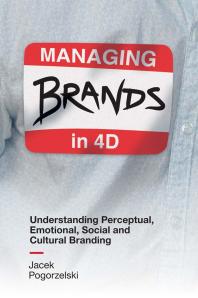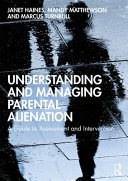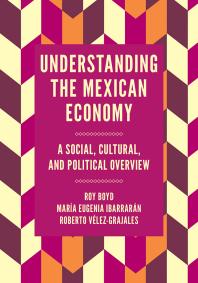Managing Brands In 4D Understanding Perceptual Emotional Social and Cultural Branding 1st Edition by Jacek Pogorzelski ISBN 9781787561021 178756102X
$50.00 Original price was: $50.00.$25.00Current price is: $25.00.
Managing Brands In 4D Understanding Perceptual Emotional Social and Cultural Branding 1st Edition by Jacek Pogorzelski – Ebook PDF Instant Download/Delivery: 9781787561021 ,178756102X
Full download Managing Brands In 4D Understanding Perceptual Emotional Social and Cultural Branding 1st Edition after payment

Product details:
ISBN 10: 178756102X
ISBN 13: 9781787561021
Author: Jacek Pogorzelski
Managing Brands In 4D Understanding Perceptual Emotional Social and Cultural Branding 1st Edition Table of contents:
Chapter 1 Introduction
Chapter 2 Branding In 4D
Chapter 3 Perceptual Branding
3.1. Area
3.1.1. The Essence of Perceptual Branding
3.1.2. The Psychology of Perception
3.1.3. Perceptual Noise
3.1.4. Basics of the Brand Image Concept
3.1.5. Brand Concept
3.1.6. Brand Positioning as the Core Instrument of Consumer’s Perception Management
3.1.7. Why Does the Brand Idea Have to Be Expressed in a Concise Way?
3.1.8. Perceptual Categorisation
3.1.9. Brand Categorisation
3.1.10. Category Code and Its Connection with the Brand
3.1.11. Category as Part of the Market versus Category as a Mental Construct
3.1.12. The Impact of Brand Width on Brand Perception
3.1.13. External Brand Strength Model
3.1.14. Classical Brand Perception Measurement
3.1.15. The Delivery Gap
3.1.16. Brand Perception versus Consumer Loyalty
3.1.17. Brand Personality – A Bordering Concept
3.1.18. Perceived Brand Personality
3.1.19. Brand Definition in Perceptual Branding
3.2. Goal
3.2.1. Category of One
3.2.2. Winning in a Category
3.2.3. Strategies within a Category
3.2.4. The Impact of Category Perception on Brand Perception
3.2.5. Brand Activation
3.3. Tools
3.3.1. USP
3.3.2. Brand Positioning Statement
3.3.3. Consumer Insight
3.3.4. Feature – Advantage – Benefit
3.3.5. Perceptual Map
3.3.6. Brand Personality Description
3.3.7. Pizza Hut
3.4. Levels
3.5. Effects
Chapter 4 Emotional Branding
4.1. Area
4.1.1. The Superiority of Emotional Branding over the Perceptual One
4.1.2. The Effectiveness of Emotional Branding
4.1.3. Misunderstood Emotions
4.1.4. Three Schools of Thinking about the Impact of Emotions on Buyers’ Choices
4.1.5. How Are Emotions Created?
4.1.6. When Emotions Become a Social Issue
4.1.7. Which Emotions?
4.1.8. The Power of Negative Emotions
4.1.9. Warm or Competent Brand?
4.1.10. Ascribing Values Based on Feelings
4.1.11. Reward Anticipation as a Motivation for Action
4.1.12. Consumer Experience as Testing Ground for Emotions
4.1.13. Engaging Emotions within a Limited Space of Experience
4.1.14. ‘Distorted’ Brand Image as a Consequence of Emotional Branding
4.1.15. Senses – A Key to Activating Emotions
4.1.15.1. Sense of Sight
4.1.15.2. Sense of Hearing
4.1.15.3. Sense of Smell
4.1.15.4. Sense of Taste
4.1.15.5. Sense of Touch
4.1.16. Sensory Overstimulation
4.1.17. Categories’ Potential for Using Emotional Branding
4.1.18. Consumer’s Relationship with a Brand
4.1.19. Brand Definition in Emotional Branding
4.2. Goal
4.2.1. Concept of Brand Love
4.2.2. Dimensions of Brand Love
4.2.3. Laws Governing Brand Love
4.2.4. Brand Anthropomorphism as a Path to Love Relationship
4.2.5. (Brand) Love Comes in Many Shapes and Forms
4.3. Tools
4.3.1. Emotional Insight
4.3.2. ESP
4.3.3. Classification of Emotions
4.3.4. Moodboard
4.3.5. Sensory Marketing, or Managing Senses
4.4. Levels
4.5. Effects
Chapter 5 Social Branding
5.1. Area
5.1.1. Human Being as a Social Animal
5.1.2. Consumer Tribes versus Brand Communities
5.1.3. Consumer Tribes
5.1.4. Community Linking Value
5.1.5. Brand as a Sense of Consumer Tribe’s Identity
5.1.6. Consumer Tribe Dynamics
5.1.7. Brand Community
5.1.8. Brand Community Typology
5.1.9. Roles Played by Brand Community Members
5.1.10. Active Roles in Co-creating the Brand
5.1.11. How a Community Creates Value
5.1.12. Community Engagement Script
5.1.13. With Them or against Them
5.1.14. Virtual Brand Community
5.1.15. Truths and Myths about Brand Community
5.1.16. Brand Definition in Social Branding
5.2. Goal
5.2.1. Unconscious Goal Activation Mechanism
5.2.2. Defining Yourself through Community Membership
5.2.3. Brand as a Community Bonding Agent
5.2.4. Brand Advocates
5.3. Tools
5.3.1. Social Marketing Mix
5.3.1.1. Propositions
5.3.1.2. Accessibility
5.3.1.3. Cost of Involvement
5.3.1.4. Social Communication
5.3.2. Linking Value or Social Insight
5.3.3. Call to Action (Brand Act Statement)
5.3.4. Blueprint for Making a Connected Brand
5.3.5. Narrative Types in Word-of-Mouth Advertising
5.4. Levels
5.5. Effects
Chapter 6 Cultural Branding
6.1. Area
6.1.1. Person and Culture
6.1.2. Consumer and Culture
6.1.3. Cultural Cohesion of Brands and Organisations
6.1.4. Consumption Microcultures
6.1.5. Brand as a Narrative about the Consumer’s Identity
6.1.6. Cultural Opposites
6.1.7. Marketisation of Culture
6.1.8. Brand Meaning
6.1.9. Brand as the Culture of the Product
6.1.10. Bad Boys, Bad Girls and the Tattoo Culture
6.1.11. Brain’s Response to Brands as Objects of Culture
6.1.12. The Mac Cult as a Manifestation of Brand Mythology
6.1.13. Simultaneous Activation of Two Cultures
6.1.14. Brand as a Cluster of Multiple Cultural Ideas
6.1.15. Brand Definition in Cultural Branding
6.2. Goal
6.2.1. Radicalisation of the Product Meaning
6.2.2. Brand as a Cultural Icon
6.2.3. Brand as Religion?
6.2.4. Wawel Chakra
6.3. Tools
6.3.1. Cultural Insight
6.3.2. Culture Codes
6.3.3. Storytelling
6.3.4. Archetypes
6.3.5. Brand Molecule
6.3.6. Brand’s Cultural Strategy
6.4. Levels
6.5. Effects
Chapter 7 Conclusion
Literature
Perceptual Branding
Emotional Branding
Social Branding
Cultural Branding
Other Literature
Index
People also search for Managing Brands In 4D Understanding Perceptual Emotional Social and Cultural Branding 1st Edition:
brand perceptual maps
brand perceptual map examples
perceptual brand mapping
perceptual branding
what is a 4d dimension
Tags:
Jacek Pogorzelski,Perceptual Emotional,Cultural Branding,Social
You may also like…
Relationships & Lifestyle - Families & Parents
Relationships & Lifestyle - Alternative Medicine & Natural Healing
Business & Economics - Sales & Marketing
Business & Economics - Sales & Marketing
Politics & Philosophy - Asian Philosophy
Business & Economics - Sales & Marketing











